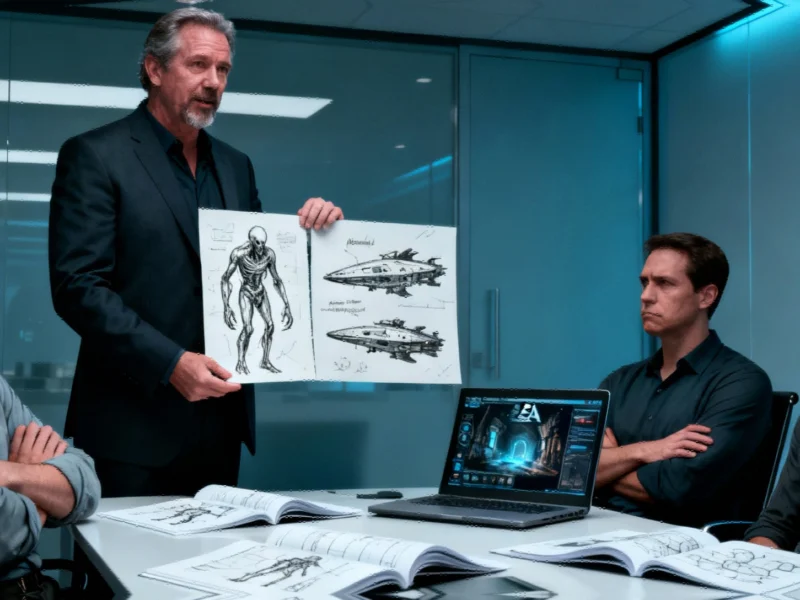According to Neowin, Obsidian Entertainment is launching a public beta for Pillars of Eternity’s new turn-based combat mode on November 5, marking a fundamental shift for the decade-old RPG. The mode represents years of work from developers Nick Carver, Jesse Bureno, and Kurt Decker, with Studio Design Director John Sawyer acknowledging they’re building on lessons from Pillars of Eternity II: Deadfire’s turn-based implementation. Key changes include Unbound Turns influenced by character speed, smarter free actions for weapon swapping and potions, increased combat lethality, and flexible mode switching between real-time with pause and turn-based systems. The beta will be available to Steam and Xbox on Windows players, with the feature eventually becoming a HUD toggle for seamless combat system switching during gameplay.
The Architecture Overhaul Behind the Scenes
Converting a real-time with pause system to turn-based represents one of the most complex technical challenges in game development. Unlike building turn-based from the ground up, Obsidian’s team had to essentially reverse-engineer their entire combat architecture while preserving the original game’s balance and feel. The public beta announcement hints at the scale of this undertaking, which required reworking core systems that have been stable for a decade.
What makes this particularly challenging is that Pillars of Eternity was built on the Unity engine with real-time combat as its foundation. Every ability, spell, and combat mechanic was designed around simultaneous action resolution. Converting this to sequential turn resolution requires rebuilding the entire action queue system, recalculating damage and effect timing, and ensuring that hundreds of interconnected systems work correctly in both modes. The fact that they’re allowing mode switching mid-game suggests they’ve created a sophisticated state management system that can transition between fundamentally different combat paradigms.
Why Turn-Based Changes Everything for CRPG Veterans
The shift to turn-based combat fundamentally alters how players experience Pillars of Eternity’s tactical depth. Real-time with pause favors players who can process multiple simultaneous actions and make quick tactical decisions, while turn-based appeals to those who prefer methodical, chess-like strategy. This isn’t just a preference difference—it changes how players build characters, approach encounters, and even how they perceive the game’s difficulty curve.
Obsidian’s implementation of “Unbound Turns” shows they’re not simply copying other turn-based systems. By tying turn order to character speed attributes from the real-time system, they’re preserving the value of existing character builds and equipment choices. This is crucial for maintaining game balance while introducing a completely new combat paradigm. The increased lethality they mention suggests they’ve rebalanced encounters to account for the precision turn-based combat allows, preventing battles from becoming drawn-out slogs.
The Broader CRPG Renaissance and Combat System Evolution
This move reflects a larger trend in the CRPG genre where developers are increasingly offering both combat styles. Games like Pathfinder: Wrath of the Righteous have demonstrated that providing both real-time and turn-based options can significantly expand a game’s audience. What’s particularly interesting about Obsidian’s approach is that they’re applying this modern expectation to a classic title, essentially future-proofing a game that helped kickstart the CRPG revival.
The timing is also significant—revisiting a 10-year-old game with such a substantial update shows how the CRPG market has evolved. When Pillars of Eternity originally launched, real-time with pause was seen as the “authentic” CRPG experience. Today, the success of games like Divinity: Original Sin 2 and Baldur’s Gate 3 has created a new generation of players who expect and prefer turn-based tactical combat. Obsidian’s update bridges these two eras of CRPG design.
The Technical Risks of Dual Combat Systems
While the flexibility of switching between combat systems sounds appealing, it introduces significant technical challenges. Each system has different balance requirements—what works in real-time might be overpowered in turn-based, and vice versa. The developers must ensure that character abilities, equipment, and encounter design work equally well in both systems, which essentially means balancing two different games within the same framework.
The memory and performance implications are also substantial. Maintaining two complete combat systems means more code to test, more edge cases to handle, and more potential for bugs. The fact that this is launching as a beta suggests Obsidian recognizes the complexity and wants community feedback to identify issues they might have missed. For players, the ability to switch modes could be revolutionary, but for developers, it’s a maintenance nightmare that requires ongoing support for two fundamentally different gameplay experiences.





Your article helped me a lot, is there any more related content? Thanks!